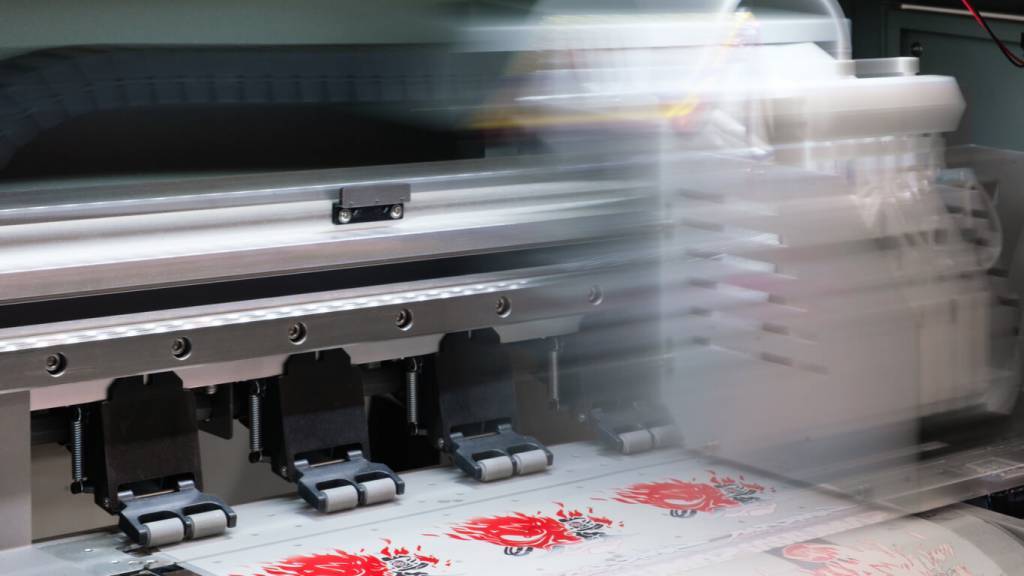
Beauty, Manufacturing, and Textiles Reshaping Inkjet Industry
The industrial inkjet printing industry stands to gain from three trends coming into focus in 2024. We identified emerging opportunities for equipment and ink manufacturers that can expand digital printing.
First, the beauty industry faces stringent UK and EU packaging regulations, prompting inkjet technology to offer eco-friendly packaging ink solutions that ensure compliance without compromising quality.
Next, Industry 4.0 technologies like IoT and AI are reshaping inkjet printing, enabling swift adaptation, data-driven decisions, and the potential for eco-friendly processes, aligning with sustainability objectives.
Lastly, in the heavily scrutinized textile industry, moving toward micro-factories incorporating inkjet technology helps meet regulatory pressure.
These trends underscore inkjet technology’s role in the evolution of printing and as a catalyst for sustainable practices across diverse industries.
Inkjet Supports Beauty Brands Facing Eco Packaging Mandates
Like other industries, notably fashion, the beauty industry faces imminent sustainability regulations in the EU and UK, with a focus on packaging.
These regulations, like the UK’s Extended Producer Responsibility (EPR), the EU’s Ecodesign for Sustainable Products Regulation (ESPR), and Packaging and Packaging Waste Regulation (PPWR), mandate increased sustainability efforts.
- Requirements and Expectations
- Collect packaging data
- Prioritize recyclable materials
- Innovate packaging design
- Adopt eco-friendly options like aluminum or compostable bioplastics
For the EU and UK markets, compliance with these regulations poses challenges and opportunities for beauty brands worldwide. The regulations necessitate redesigned packaging, increased recycled content, and adherence to environmental labeling standards, potentially impacting costs and competitiveness.

Some beauty brands use aluminum packaging to support recycling.
Forward-thinking beauty brands have already embraced sustainability in the face of future regulation and in response to increased consumer demands.
Companies can take incremental steps to navigate these changes, ranging from easy wins like reducing unnecessary packaging to heavier lifts involving infrastructural changes supporting a circular economy.
Beauty brands are exploring sustainable packaging solutions like direct printing, using sustainable labels, incorporating post-consumer recycled materials, adopting refillable packaging, and innovating package design to minimize plastic usage.
Industrial inkjet printing is crucial, offering eco-friendly ink options like water-based or LED-curable inks that meet sustainability criteria and quality expectations. New, more eco-friendly substrates may require new ink formulations.
As the beauty industry aligns aesthetics with environmental responsibility, proactive measures and collaborations, including ink manufacturers like Kao Collins, aim to meet sustainability goals while maintaining quality and appeal.
Industry 4.0 Reshaping Inkjet’s Future

Printers and equipment manufacturers see opportunities in AI and IIoT.
“Industry 4.0” is reshaping manufacturing, and industrial inkjet printing is no exception. This shift incorporates technologies like IoT, AI, and robotics to revolutionize traditional production processes.
The impact on industrial inkjet printing is evident in its ability to optimize processes, adapt swiftly to market demands, and leverage data-driven decision-making. This shift means moving from standalone to integrated digital printing.
Several case studies, such as Cyan Tec’s robotic inkjet printing and MapleJet’s IoT-driven industrial printer, exemplify how Industry 4.0 principles reshape inkjet technology. Additionally, companies like Heidelberg are embracing digital transformation, incorporating data analytics, automation, and robotics into their printing processes.
The future holds promising developments where IoT-enabled printers could dynamically adjust ink properties, optimize printing conditions, and ensure high-quality output. Real-time data analysis, AI, and robotics will further refine printing processes, offering unparalleled precision and adaptability.
Industry 4.0 affects printing quality and the production line for bottom-line results. The potential to support sustainability goals by optimizing supply chains and introducing innovative inks for traceability is not overlooked.
The future sees adaptable ink, real-time analysis, and AI for better printing. Industry 4.0 optimizes supply chains, offers traceable inks, and backs sustainability. Predictive maintenance keeps operations smooth.
Embracing Industry 4.0’s disruptive technologies is pivotal for the industrial inkjet printing industry, ushering in a future of innovation, precision, productivity, and sustainability.
Inkjet Playing A Central Role in Scaling Textile Micro-Factories
Industrial inkjet printing is fundamentally reshaping the textile manufacturing landscape within micro-factories. These compact facilities harness the potential of inkjet technology paired with eco-conscious inks to streamline production processes, especially in the face of stringent regulations being imposed.

Industrial inkjet printing supports micro textile factories that are seen as a way toward improved sustainability.
The impact of industrial inkjet printing on micro-factories is substantial. It revolutionizes manufacturing processes, reducing production timelines and costs while addressing environmental concerns. Notably, water-based pigment inks play a pivotal role by minimizing water usage and eliminating post-treatment procedures, promoting greener textile production.
Inkjet inks enable micro-factories to craft intricate designs and personalized prints for unparalleled flexibility. They also facilitate swift prototyping for brands to respond to shifting trends and consumer preferences quickly.
Compared to conventional methods, inkjet technology significantly expedites production by eliminating the necessity for screens or plates. Digital tools ensure seamless integration throughout manufacturing, optimizing material usage and curbing waste.
Key ink formulations like water-based pigments offer vibrant colors, durability, and eco-friendliness. Leading industry players are driving the adoption of inkjet technology in textile printers, reshaping the manufacturing landscape.
As micro-factories continue to evolve, the demand for reliable ink suppliers intensifies. Commercial ink manufacturers have the opportunity to establish themselves as trustworthy providers of high-quality solutions to shape the trajectory of the textile industry toward sustainable and efficient production methodologies.
Our focus is formulating innovative, sustainable inkjet inks. Contact Kao Collins for help with navigating opportunities.






